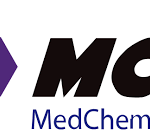α-Hemolysin (Staphylococcus aureus)-500 μg

Description
α-Hemolysin (Staphylococcus aureus) is one of the most characteristic virulence factors secreted by Staphylococcus aureus, a polypeptide capable of destroying the host cell plasma membrane. After α-Hemolysin binds to the cell surface, its monomers assemble into a homoheptamer to form a front pore, which then transforms into a mature transmembrane pore water channel, allowing K+ and Ca2+ ion transport, leading to necrotic death of target cells[1].–80°C, 2 years; -20°C, 1 year (Powder, sealed storage, away from moisture)—-C1269H1971N339O400S6—-[1]Robin R Craven, et al. Staphylococcus aureus alpha-hemolysin activates the NLRP3-inflammasome in human and mouse monocytic cells. PLoS One. 2009 Oct 14;4(10):e7446. –94716-94-6–28569.06—-[a-Hemolysin from Staphylococcus aureus]–Others–10 mM in DMSO–Others—-Others–Peptides



 Did you check our products for animal nutrition?
Did you check our products for animal nutrition? 